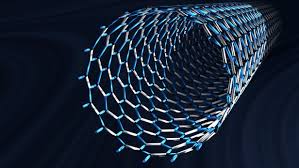
Breaking News
 CDC to end animal testing in groundbreaking decision that will impact hundreds of experiments
CDC to end animal testing in groundbreaking decision that will impact hundreds of experiments
 Once-thriving shopping mall in ailing Democrat-run city is eerily empty on last Sunday before...
Once-thriving shopping mall in ailing Democrat-run city is eerily empty on last Sunday before...
 One-of-a-kind trimaran is set to be pedaled around the world
One-of-a-kind trimaran is set to be pedaled around the world
 Israel Expands Territory With 19 New Settlements In West Bank
Israel Expands Territory With 19 New Settlements In West Bank
Top Tech News
 Perfect Aircrete, Kitchen Ingredients.
Perfect Aircrete, Kitchen Ingredients.
 Futuristic pixel-raising display lets you feel what's onscreen
Futuristic pixel-raising display lets you feel what's onscreen
 Cutting-Edge Facility Generates Pure Water and Hydrogen Fuel from Seawater for Mere Pennies
Cutting-Edge Facility Generates Pure Water and Hydrogen Fuel from Seawater for Mere Pennies
 This tiny dev board is packed with features for ambitious makers
This tiny dev board is packed with features for ambitious makers
 Scientists Discover Gel to Regrow Tooth Enamel
Scientists Discover Gel to Regrow Tooth Enamel
 Vitamin C and Dandelion Root Killing Cancer Cells -- as Former CDC Director Calls for COVID-19...
Vitamin C and Dandelion Root Killing Cancer Cells -- as Former CDC Director Calls for COVID-19...
 Galactic Brain: US firm plans space-based data centers, power grid to challenge China
Galactic Brain: US firm plans space-based data centers, power grid to challenge China
 A microbial cleanup for glyphosate just earned a patent. Here's why that matters
A microbial cleanup for glyphosate just earned a patent. Here's why that matters
 Japan Breaks Internet Speed Record with 5 Million Times Faster Data Transfer
Japan Breaks Internet Speed Record with 5 Million Times Faster Data Transfer
Laser-activated nanotube skin shows where the strain is

Whether they're in airplane wings, bridges or other critical structures, cracks can cause catastrophic failure before they're large enough to be noticed by the human eye. A strain-sensing "skin" applied to such objects could help, though, by lighting up when exposed to laser light.
Developed by a team led by Rice University's Bruce Weisman and Satish Nagarajaiah, the skin is actually a barely-visible very thin film. It consists of a bottom layer of carbon nanotubes dispersed within a polymer, and a top transparent protective layer composed of a different type of polymer (carbon nanotubes are basically microscopic rolled-up sheets of graphene, graphene being a one-atom-thick sheet of linked carbon atoms).
As is the case with carbon nanotubes in general, the ones in the skin fluoresce when subjected to laser light. Depending on how much mechanical strain they're under, however, they'll fluoresce at different wavelengths. Therefore, by analyzing the wavelength of the near-infrared light that the nanotubes are emitting, a handheld reader device can ascertain the amount of strain being exerted on any one area of the skin – and thus on the material underlying it.
The skin has been tested on aluminum bars, which were weakened in one spot with a hole or a notch. While those bars initially appeared uniform to the reader, the skin dramatically indicated where the weakened areas were once the bars were placed under tension.

 Advanced Propulsion Resources Part 1 of 2
Advanced Propulsion Resources Part 1 of 2

